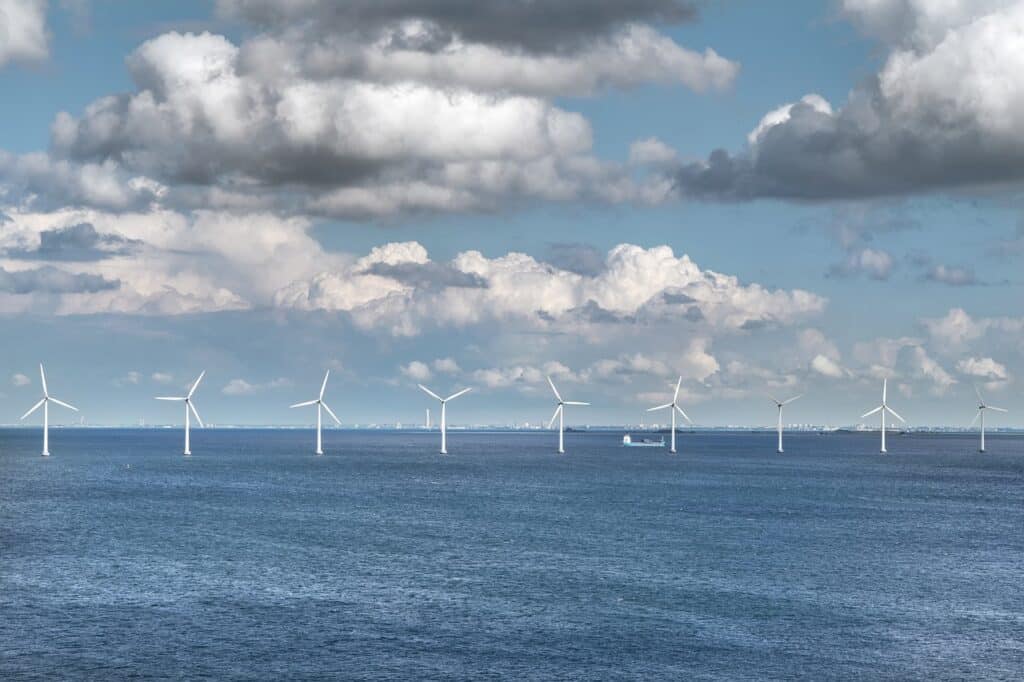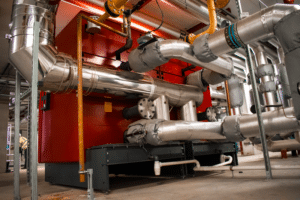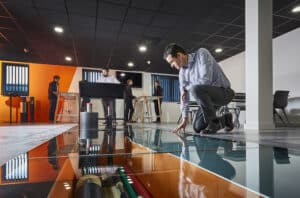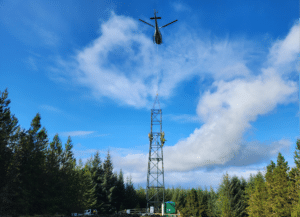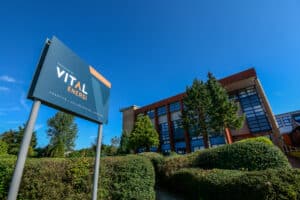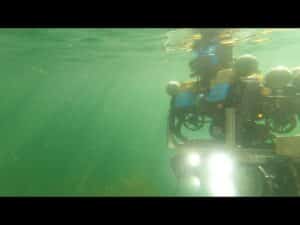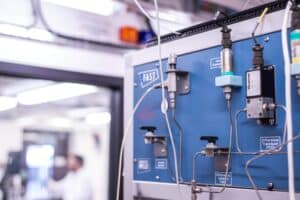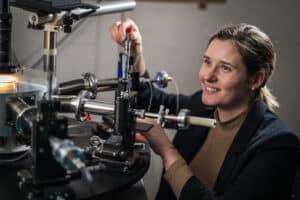How robots are making offshore wind maintenance safer and more efficient
By Pete Felton, Business Development Executive, National Robotarium
First published in Energy Voice on 07/05/2024

The UK’s offshore wind sector has been setting records in clean electricity generation, accounting for an impressive 28% of the country’s overall energy production in 2023. This success has been driven by significant investment, with Britain’s wind energy sector attracting more than £45 billion and supporting over 30,000 jobs.
To meet the UK’s clean energy targets, we must install one new offshore wind turbine every day until 2030, adding approximately 2,500 new turbines to the existing 11,000. While the UK’s strong winds and shallow coastline make it an ideal location for offshore wind energy, maintaining these towering structures in the North Sea and along the coasts is a monumental task with significant environmental implications.
Enter robots – the unsung heroes of wind farm maintenance. From drone inspectors to deep-sea repair bots, innovative technology is making wind farm upkeep safer, more efficient, and eco-friendly.
Robotic solutions for efficient maintenance
Typically, wind turbines require up to three annual maintenance visits involving crewed boats and manual inspections. The current standard involves crews travelling to open ocean areas, with divers and ship-based personnel manually inspecting and occasionally using remote-controlled robots for repairs. This process consumes hundreds of thousands of man-hours yearly, resulting in a negative environmental impact that undermines the goal of clean energy.
The National Robotarium has partnered with leading geo-data specialists to develop crewless maintenance vehicles (ROVs), which can perform maintenance and repair tasks on offshore wind turbines deployed from uncrewed surface vessels (USVs). The collaboration aims to explore the benefits of advancing autonomous technology in the offshore energy sector.
These eROVs and USVs can carry out maintenance and repair tasks on offshore wind turbines without requiring human crews, thereby reducing the risks associated with offshore operations and minimising the environmental impact of frequent travel to and from coastal areas.
Furthermore, the National Robotarium’s researchers are collaborating with a Scotland-based company to develop remote inspection solutions using drones. The project is in its early stages, focusing on detection and avoidance systems. Experts from both organisations are working together to assess the system’s feasibility, design, and testing through upcoming pilot projects. These specialised drones can inspect assets three times faster and be deployed within 30 minutes, saving an average of one tonne of CO2 per asset.
Enhancing performance through data
Inspection robots and associated technology serve as more than just maintenance tools; they are also travelling data collectors. With eROVs, drones, and robot cranes acting as all-seeing eyes and ears, a wind farm becomes a transparent, knowable machine. Every defect and sign of degradation can be caught in real-time, eliminating costly surprises and providing a comprehensive view of the system’s health, regardless of harsh weather conditions.
The wealth of data collected fuels predictive maintenance algorithms, enabling technical teams to anticipate repairs before failures occur. It’s like having a dedicated pit crew meticulously inspecting and tuning the machine around the clock.
The flexibility of these robotic solutions is remarkable, as eROVs performing subsea inspections can be piloted from a distant command centre, dissolving geographic boundaries.
Currently, engineers and technicians at the National Robotarium are developing methods for robots to create highly detailed maps of the seafloor, providing a comprehensive view of the wind farm’s surroundings. This technology will identify obstacles and hazards, and in the event of required human intervention, robots will pinpoint the exact location of the issue. With this level of precision, repair missions can be executed with unparalleled efficiency.
The future of offshore wind maintenance
As the UK continues to harness the power of offshore wind to meet its clean energy goals, the integration of robotics and AI will play a pivotal role in ensuring the sustainability and cost-effectiveness of this essential industry. Successful partnerships by the National Robotarium will showcase the potential for innovative technologies to revolutionise offshore wind maintenance, making it safer, more efficient, and environmentally friendly.
By embracing these cutting-edge solutions, the UK can not only meet its ambitious net zero targets but also position itself as a global leader in the offshore wind sector. As robots take on the challenges of maintaining these colossal structures, the future of clean energy looks brighter than ever.

